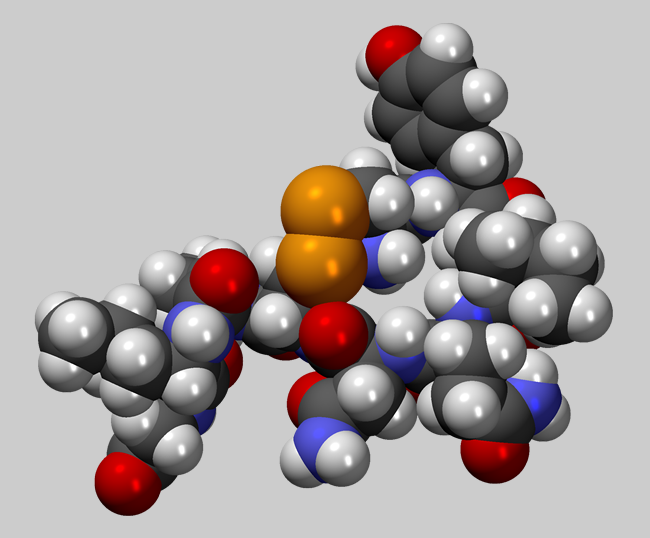
Scientific consensus states that our universe is not only expanding, but expanding at an ever-increasing rate. So, sometime in the very distant future (tens of billions of years) our Milky Way galaxy will be mostly alone, accompanied only by its close galactic neighbors, such as Andromeda. All else in the universe will have receded beyond the horizon of visible light. And, yet for all the experimental evidence, no one knows the precise cause(s) of this acceleration or even of the expansion itself. But, there is no shortage of bold new theories.
[div class=attrib]From New Scientist:[end-div]
WE WILL be lonely in the late days of the cosmos. Its glittering vastness will slowly fade as countless galaxies retreat beyond the horizon of our vision. Tens of billions of years from now, only a dense huddle of nearby galaxies will be left, gazing out into otherwise blank space.
That gloomy future comes about because space is expanding ever faster, allowing far-off regions to slip across the boundary from which light has time to reach us. We call the author of these woes dark energy, but we are no nearer to discovering its identity. Might the culprit be a repulsive force that emerges from the energy of empty space , or perhaps a modification of gravity at the largest scales? Each option has its charms, but also profound problems.
, or perhaps a modification of gravity at the largest scales? Each option has its charms, but also profound problems.
But what if that mysterious force making off with the light of the cosmos is an alien echo of light itself? Light is just an expression of the force of electromagnetism, and vast electromagnetic waves of a kind forbidden by conventional physics, with wavelengths trillions of times larger than the observable universe, might explain dark energy’s baleful presence. That is the bold notion of two cosmologists who think that such waves could also account for the mysterious magnetic fields that we see threading through even the emptiest parts of our universe. Smaller versions could be emanating from black holes within our galaxy.
It is almost two decades since we realised that the universe is running away with itself. The discovery came from observations of supernovae that were dimmer, and so further away, than was expected, and earned its discoverers the Nobel prize in physics in 2011.
Prime suspect in the dark-energy mystery is the cosmological constant, an unchanging energy which might emerge from the froth of short-lived, virtual particles that according to quantum theory are fizzing about constantly in otherwise empty space.
Mutant gravity
To cause the cosmic acceleration we see, dark energy would need to have an energy density of about half a joule per cubic kilometre of space. When physicists try to tot up the energy of all those virtual particles, however, the answer comes to either exactly zero (which is bad), or something so enormous that empty space would rip all matter to shreds (which is very bad). In this latter case the answer is a staggering 120 orders of magnitude out, making it a shoo-in for the least accurate prediction in all of physics.
This stumbling block has sent some researchers down another path. They argue that in dark energy we are seeing an entirely new side to gravity. At distances of many billions of light years, it might turn from an attractive to a repulsive force.
But it is dangerous to be so cavalier with gravity. Einstein’s general theory of relativity describes gravity as the bending of space and time, and predicts the motions of planets and spacecraft in our own solar system with cast-iron accuracy. Try bending the theory to make it fit acceleration on a cosmic scale, and it usually comes unstuck closer to home.
That hasn’t stopped many physicists persevering along this route. Until recently, Jose Beltrán and Antonio Maroto were among them. In 2008 at the Complutense University of Madrid, Spain, they were playing with a particular version of a mutant gravity model called a vector-tensor theory, which they had found could mimic dark energy. Then came a sudden realisation. The new theory was supposed to be describing a strange version of gravity, but its equations bore an uncanny resemblance to some of the mathematics underlying another force. “They looked like electromagnetism,” says Beltrán, now based at the University of Geneva in Switzerland. “We started to think there could be a connection.”
So they decided to see what would happen if their mathematics described not masses and space-time, but magnets and voltages. That meant taking a fresh look at electromagnetism. Like most of nature’s fundamental forces, electromagnetism is best understood as a phenomenon in which things come chopped into little pieces, or quanta. In this case the quanta are photons: massless, chargeless particles carrying fluctuating electric and magnetic fields that point at right angles to their direction of motion.
Alien photons
This description, called quantum electrodynamics or QED, can explain a vast range of phenomena, from the behaviour of light to the forces that bind molecules together. QED has arguably been tested more precisely than any other physical theory, but it has a dark secret. It wants to spit out not only photons, but also two other, alien entities.
The first kind is a wave in which the electric field points along the direction of motion, rather than at right angles as it does with ordinary photons. This longitudinal mode moves rather like a sound wave in air. The second kind, called a temporal mode, has no magnetic field. Instead, it is a wave of pure electric potential, or voltage. Like all quantum entities, these waves come in particle packets, forming two new kinds of photon.
As we have never actually seen either of these alien photons in reality, physicists found a way to hide them. They are spirited away using a mathematical fix called the Lorenz condition, which means that all their attributes are always equal and opposite, cancelling each other out exactly. “They are there, but you cannot see them,” says Beltrán.
Beltrán and Maroto’s theory looked like electromagnetism, but without the Lorenz condition. So they worked through their equations to see what cosmological implications that might have.
The strange waves normally banished by the Lorenz condition may come into being as brief quantum fluctuations – virtual waves in the vacuum – and then disappear again. In the early moments of the universe, however, there is thought to have been an episode of violent expansion called inflation, which was driven by very powerful repulsive gravity. The force of this expansion grabbed all kinds of quantum fluctuations and amplified them hugely. It created ripples in the density of matter, for example, which eventually seeded galaxies and other structures in the universe.
Crucially, inflation could also have boosted the new electromagnetic waves. Beltrán and Maroto found that this process would leave behind vast temporal modes: waves of electric potential with wavelengths many orders of magnitude larger than the observable universe. These waves contain some energy but because they are so vast we do not perceive them as waves at all. So their energy would be invisible, dark… perhaps, dark energy?
Beltrán and Maroto called their idea dark magnetism (arxiv.org/abs/1112.1106). Unlike the cosmological constant, it may be able to explain the actual quantity of dark energy in the universe. The energy in those temporal modes depends on the exact time inflation started. One plausible moment is about 10 trillionths of a second after the big bang, when the universe cooled below a critical temperature and electromagnetism split from the weak nuclear force to become a force in its own right. Physics would have suffered a sudden wrench, enough perhaps to provide the impetus for inflation.
If inflation did happen at this “electroweak transition”, Beltrán and Maroto calculate that it would have produced temporal modes with an energy density close to that of dark energy. The correspondence is only within an order of magnitude, which may not seem all that precise. In comparison with the cosmological constant, however, it is mildly miraculous.
The theory might also explain the mysterious existence of large-scale cosmic magnetic fields. Within galaxies we see the unmistakable mark of magnetic fields as they twist the polarisation of light. Although the turbulent formation and growth of galaxies could boost a pre-existing field, is it not clear where that seed field would have come from.
Even more strangely, magnetic fields seem to have infiltrated the emptiest deserts of the cosmos. Their influence was noticed in 2010 by Andrii Neronov and Ievgen Vovk at the Geneva Observatory. Some distant galaxies emit blistering gamma rays with energies in the teraelectronvolt range. These hugely energetic photons should smack into background starlight on their way to us, creating electrons and positrons that in turn will boost other photons up to gamma energies of around 100 gigaelectronvolts. The trouble is that astronomers see relatively little of this secondary radiation. Neronov and Vovk suggest that is because a diffuse magnetic field is randomly bending the path of electrons and positrons, making their emission more diffuse (Science, vol 32, p 73).
“It is difficult to explain cosmic magnetic fields on the largest scales by conventional mechanisms,” says astrophysicist Larry Widrow of Queen’s University in Kingston, Ontario, Canada. “Their existence in the voids might signal an exotic mechanism.” One suggestion is that giant flaws in space-time called cosmic strings are whipping them up.
With dark magnetism, such a stringy solution would be superfluous. As well as the gigantic temporal modes, dark magnetism should also lead to smaller longitudinal waves bouncing around the cosmos. These waves could generate magnetism on the largest scales and in the emptiest voids.
To begin with, Beltrán and Maroto had some qualms. “It is always dangerous to modify a well-established theory,” says Beltrán. Cosmologist Sean Carroll at the California Institute of Technology in Pasadena, echoes this concern. “They are doing extreme violence to electromagnetism. There are all sorts of dangers that things might go wrong,” he says. Such meddling could easily throw up absurdities, predicting that electromagnetic forces are different from what we actually see.
The duo soon reassured themselves, however. Although the theory means that temporal and longitudinal modes can make themselves felt, the only thing that can generate them is an ultra-strong gravitational field such as the repulsive field that sprang up in the era of inflation. So within the atom, in all our lab experiments, and out there among the planets, electromagnetism carries on in just the same way as QED predicts.
Carroll is not convinced. “It seems like a long shot,” he says. But others are being won over. Gonzalo Olmo, a cosmologist at the University of Valencia, Spain, was initially sceptical but is now keen. “The idea is fantastic. If we quantise electromagnetic fields in an expanding universe, the effect follows naturally.”
So how might we tell whether the idea is correct? Dark magnetism is not that easy to test. It is almost unchanging, and would stretch space in almost exactly the same way as a cosmological constant, so we can’t tell the two ideas apart simply by watching how cosmic acceleration has changed over time.
Ancient mark
Instead, the theory might be challenged by peering deep into the cosmic microwave background, a sea of radiation emitted when the universe was less than 400,000 years old. Imprinted on this radiation are the original ripples of matter density caused by inflation, and it may bear another ancient mark. The turmoil of inflation should have energised gravitational waves, travelling warps in space-time that stretch and squeeze everything they pass through. These waves should affect the polarisation of cosmic microwaves in a distinctive way, which could tell us about the timing and the violence of inflation. The European Space Agency’s Planck spacecraft might just spot this signature. If Planck or a future mission finds that inflation happened before the electroweak transition, at a higher energy scale, then that would rule out dark magnetism in its current form.
Olmo thinks that the theory might anyhow need some numerical tweaking, so that might not be fatal, although it would be a blow to lose the link between the electroweak transition and the correct amount of dark energy.
One day, we might even be able to see the twisted light of dark magnetism. In its present incarnation with inflation at the electroweak scale, the longitudinal waves would all have wavelengths greater than a few hundred million kilometres, longer than the distance from Earth to the sun. Detecting a light wave efficiently requires an instrument not much smaller than the wavelength, but in the distant future it might just be possible to pick up such waves using space-based radio telescopes linked up across the solar system. If inflation kicked in earlier at an even higher energy, as suggested by Olmo, some of the longitudinal waves could be much shorter. That would bring them within reach of Earth-based technology. Beltrán suggests that they might be detected with the Square Kilometre Array – a massive radio instrument due to come on stream within the next decade.
If these dark electromagnetic waves can be created by strong gravitational fields, then they could also be produced by the strongest fields in the cosmos today, those generated around black holes. Beltrán suggests that waves may be emitted by the black hole at the centre of the Milky Way. They might be short enough for us to see – but they could easily be invisibly faint. Beltrán and Maroto are planning to do the calculations to find out.
One thing they have calculated from their theory is the voltage of the universe. The voltage of the vast temporal waves of electric potential started at zero when they were first created at the time of inflation, and ramped up steadily. Today, it has reached a pretty lively 1027 volts, or a billion billion gigavolts.
Just as well for us that it has nowhere to discharge. Unless, that is, some other strange quirk of cosmology brings a parallel universe nearby. The encounter would probably destroy the universe as we know it, but at least then our otherwise dark and lonely future would end with the mother of all lightning bolts.
[div class=attrib]Read the entire article after the jump.[end-div]
[div class=attrib]Graphic courtesy of NASA / WMAP.[end-div]


 Four billion, or so, years from now, our very own Milky Way galaxy is expected to begin a slow but enormous collision with its galactic sibling, the Andromeda galaxy. Cosmologists predict the ensuing galactic smash will take around 100 million years to complete. It’s a shame we’ll not be around to witness the spectacle.
Four billion, or so, years from now, our very own Milky Way galaxy is expected to begin a slow but enormous collision with its galactic sibling, the Andromeda galaxy. Cosmologists predict the ensuing galactic smash will take around 100 million years to complete. It’s a shame we’ll not be around to witness the spectacle.



 The practical science behind quantum computers continues to make exciting progress. Quantum computers promise, in theory, immense gains in power and speed through the use of atomic scale parallel processing.
The practical science behind quantum computers continues to make exciting progress. Quantum computers promise, in theory, immense gains in power and speed through the use of atomic scale parallel processing. A small, but growing, idea in theoretical physics and cosmology is that spacetime may be emergent. That is, spacetime emerges from something much more fundamental, in much the same way that our perception of temperature emerges from the motion and characteristics of underlying particles.
A small, but growing, idea in theoretical physics and cosmology is that spacetime may be emergent. That is, spacetime emerges from something much more fundamental, in much the same way that our perception of temperature emerges from the motion and characteristics of underlying particles.



 The tension between science, religion and politics that began several millennia ago continues unabated.
The tension between science, religion and politics that began several millennia ago continues unabated. There is a small but mounting body of evidence that supports the notion of the so-called Runner’s High, a state of euphoria attained by athletes during and immediately following prolonged and vigorous exercise. But while the neurochemical basis for this may soon be understood little is known as to why this happens. More on the how and the why from Scicurious Brain.
There is a small but mounting body of evidence that supports the notion of the so-called Runner’s High, a state of euphoria attained by athletes during and immediately following prolonged and vigorous exercise. But while the neurochemical basis for this may soon be understood little is known as to why this happens. More on the how and the why from Scicurious Brain. Astrobiologist Caleb Scharf brings us up to date on Fermi’s Paradox — which asks why, given that our galaxy is so old, haven’t other sentient intergalactic travelers found us. The answer may come from a video game.
Astrobiologist Caleb Scharf brings us up to date on Fermi’s Paradox — which asks why, given that our galaxy is so old, haven’t other sentient intergalactic travelers found us. The answer may come from a video game.
 [div class=attrib]From Scientific American:[end-div]
[div class=attrib]From Scientific American:[end-div]
 [div class=attrib]From the Guardian:[end-div]
[div class=attrib]From the Guardian:[end-div]
 Are you a Leszczynska or a Bob? And, do you wish to be liked? Well, sorry Leszczynska. It turns out that having an easily pronounceable name makes you more likable.
Are you a Leszczynska or a Bob? And, do you wish to be liked? Well, sorry Leszczynska. It turns out that having an easily pronounceable name makes you more likable. [div class=attrib]From the Economist:[end-div]
[div class=attrib]From the Economist:[end-div] New research suggests that women feel pain more intensely than men.
New research suggests that women feel pain more intensely than men.